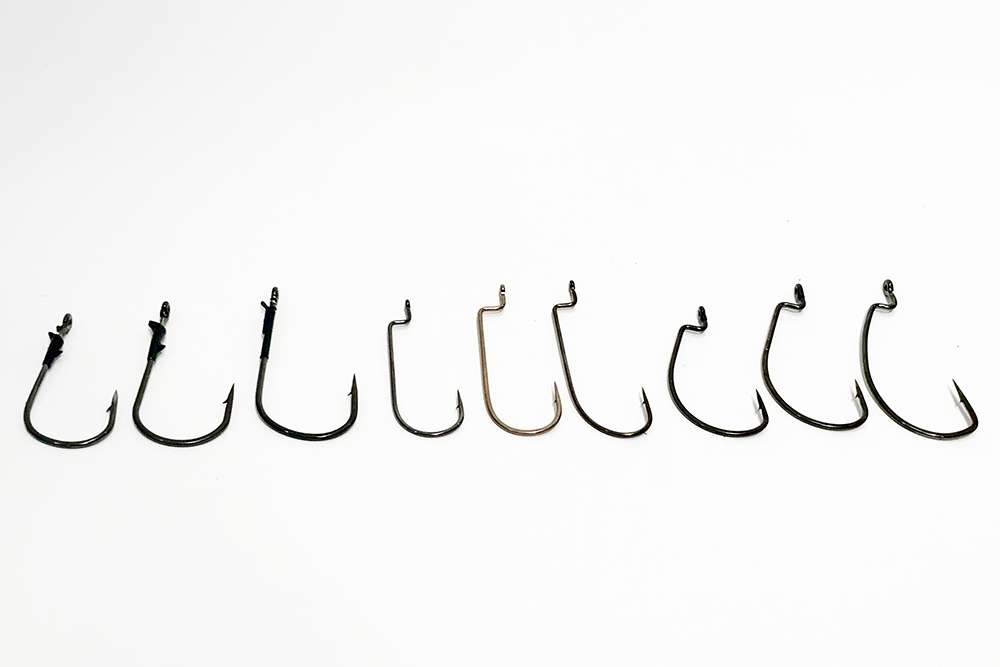
The right style hook is essential to successful Texas rigging, here are some styles to consider in Part 1.
Which ones work best?
There are three basic types of hooks that I would recommend: straight shank, offset round bend and offset wide gap. Each of the three types have unique and situational benefits when using a Texas rig.
Straight shank
Flipping, punching and pitching: A straight-shank hook should be your go-to hook when it comes to working a Texas rig through cover. Whether it is matted vegetation, close quarters or flipping bushes, when it comes to short casts and fishing cover, a straight-shank hook will be the hook you want tied on your line.
When you are using a straight-shank hook, the bait slides through heavy cover without hindering the action of the bait on the fall. Not only does a straight-shank hook provide more lifelike action on the drop, the hook-up ratio is better than other types of worm hooks — this is due to the alignment of the barb in relation to the eye of the hook — the eye and the barb are not in line. A straight shank has the lesser amount of gap space than the other two hooks being discussed, therefore decreasing the likelihood a fish will escape the hook.
Offset round bend
The offset round bend is the tried-and-true hook when it comes to worm hooks. The offset round-bend is widely the first choice for traditional Texas rigging. The offset shank allows the user to efficiently and effectively rig larger or bulkier soft plastics on the hook, while providing space for the plastic to rest below the hook eye, instead of a traditional bait-keeper.
Offset round bend hooks are commonly used for large worms and bulky creature-style baits because the hook’s barb penetrates the bait further down the area of the soft plastic. The offset round bend is used in open-water Texas rigging, dragging or stroking a worm off the bottom, and in a variety of sparse cover.
Offset wide gap or extra wide gap
An offset wide gap, or an “EWG” hook, is great for thick soft plastics because the larger gap provides plenty of room for the soft plastic to get out of the way of a positive hookset. The issue of a wide gap hook is the barb is directly in line with the eye of the hook, causing a greater chance of losing fish. Overall, the ease of threading a bait in fish-ready position is the main benefit to an EWG hook, but could be the difference in keeping the fish of your life hooked until it reaches the boat.
General rule of thumb: Use the most compact gapped hook you can get away with, there will ultimately be less room for failure across the board.
Part 1 | Part 3 | Part 4 | Part 5 | Part 6
Editor’s Note: Are you new to bass fishing? Explore our Bass Fishing for Beginners page to find dozens of tips for new bass anglers.




